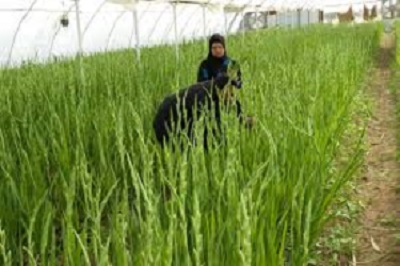Rome – FAO welcomed the new report published recently by WFP on food security, conflict and international migration.
“The WFP report is an important contribution to the debate and analysis of some of the fundamental drivers of migration especially those related to conflict and food insecurity,” said Kostas Stamoulis, FAO Assistant Director-General. Economic and Social Development Department.
Making migration a choice rather than a necessity implies the creation of alternative and resilient livelihood opportunities,” Stamoulis said.
“As three quarters of extreme poor and hungry people in the world are located in rural areas, it is natural that we should prioritize investments in sustainable rural development, climate change adaptation and resilient rural livelihoods,” he added.
Migration supported by well-informed, far-sighted policies and managed in accordance with human rights principles, “is a positive and enriching phenomenon, both for migrants themselves, the communities that receive them, and for countries of origin.”
Addressing drivers of migration – hunger, poverty, conflict and lack of development opportunities – is the foundation to achieving safe, orderly and regular migration and allowing individuals to live in dignity, consistent with the 2030 Agenda for Sustainable Development.
FAO believes that any response to large migratory movements must take into account that a large share of migrants originate from rural areas and that, as the agriculture sectors shrinks, a further increasing number of rural people, especially youth, will migrate to urban areas. Investing in sustainable rural development, climate change adaptation and resilient rural livelihoods is an important part of the global response to the current migration challenge.
In addressing migration, particular attention should paid to youth. Many young people migrate from rural areas, because they find working in low-productivity agriculture unattractive. “We should intervene to enhance their skills and facilitate their entrepreneurship. In Africa, in particular, there is enormous potential to promote agri-business development, which could unleash this ‘youth power’,” Stamoulis said.
Climate change is one of the root causes of rural migration that exacerbates other socio-economic drivers of migration, such as rural poverty and food insecurity. The increasing frequency and intensity of climate extremes as well as environmental degradation and resource depletion will lead to increased migration. Sustainable agricultural development is therefore essential to enhance resilience against climate risks, according to FAO.
FAO advocates for increased attention to internal migration movements, including seasonal and circular migration, for which there is currently paucity of evidence and data. Internal and international migration are often interrelated, as poor people might first move to towns and urban centres and eventually, later on, embark on international migration.
Prepared By: Sh. Kh.

